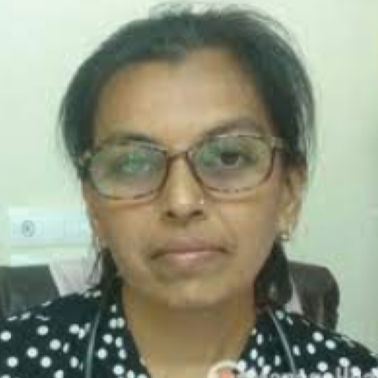Endometriosis: Causes, Symptoms, and Effective Treatments
Endometriosis is a painful and chronic condition that causes menstrual and fertility issues. Read more to know about its causes, symptoms, and treatment options.

Written by
Last updated on 3rd Jul, 2025
Endometriosis is a condition in which endometrium (tissues similar to the uterus lining) grows outside one's uterus. It affects nearly 10% of women who are of reproductive age and causes multiple issues, including infertility, period pain, and others.
Keep reading to learn more about its cause, symptoms, and treatment options!
Causes of Endometriosis
Though the actual causes of endometriosis are yet not discovered, here are some of the possible factors that can lead to such conditions:
It is found that some family members are more likely to be affected by endometriosis than others. Thus, genetic factors can cause such issues.
During the menstruation cycle, endometrial tissues may enter one's fallopian tubes instead of leaving the body through menstrual blood.
The lymphatic system or blood can transport endometrial tissues to different body parts.
After surgeries like hysterectomy or C-sections, endometrial cells often get attached to the abdomen walls or other body parts.
Sometimes, other cells of the body may transform into endometrial cells. These cells grow outside one’s endometrium.
Symptoms of Endometriosis
Here are some of the most common symptoms of endometriosis:
1. Painful Intercourse
One of the common symptoms of endometriosis is experiencing pain after or during sex.
2. Pain During Urination or Bowel Movements
One can feel pain while urinating or bowel movements during or before menstrual cycle if they have endometriosis.
3. Period Pain
Endometriosis can lead to period cramps and pelvic pain accompanied by stomach and back pain that starts before the menstruation and continues for days.
4. Infertility
In some individuals, endometriosis has been diagnosed first while testing for infertility. Thus, infertility is considered as a symptom of this condition.
5. Too Much Bleeding
Heavy menstrual flow can also indicate conditions like endometriosis.
Some other symptoms of endometriosis include the following before menstrual cycle:
Constipation
Nausea
Fatigue
Bloating
Diarrhoea, etc.
Risk Factors
Here are the potential risk factors of endometriosis:
Low BMI
Family history
First period at a young age
Heavy periods lasting over a week
Less than 28 days gap between two menstrual cycles
Menopause at an older age
High levels of estrogen
A health condition that prevents normal blood flow during menstruation
Nulliparous (one who has not given birth either by choice or some other reason), etc.
Diagnosis of Endometriosis
As endometriosis symptoms are similar to other health conditions, doctors often ask for the following tests for accurate diagnosis:
1. Physical Test
A physical test refers to the pelvic exam in which the doctors look into the cervix and vagina using a speculum and light. They also check for scars or cysts behind the uterus by manually feeling one's abdomen.
2. Ultrasound
Doctors often ask for an abdominal or transvaginal ultrasound to get a detailed image of the reproductive organs. It helps check if the cysts in one's reproductive organs are associated with endometriosis.
3. Laparoscopy
It is the best method to check for endometriosis. Doctors can view endometriosis directly in this process through a minor surgery.
Treatment Options
Doctors can implement any of these treatments for endometriosis based on the severity of one’s condition:
1. Medications
NSAIDs (nonsteroidal anti-inflammatory drugs) help reduce the pain of endometriosis. Doctors prescribe medicines to manage the endometriosis symptoms.
2. Hormonal Therapy
Some hormonal therapies like the following can help reduce the pain and suppress one's menstrual cycle:
GnRH Agonists
Gonadotropin-releasing hormone agonists or antagonists are a medicine that stops the menstruation-causing hormone to relieve endometriosis pain.
Birth Control
These pills are available in combination therapy of progestin and estrogen or only progestin. It reduces the period pain and heavy flow. Birth controls are available in various forms like vaginal rings, birth control pills, implants, patches, birth control shots, etc.
Danazol
This medicine prevents the body from producing period-causing hormones. Individuals taking this medicine to treat endometriosis may not get menstruation or experience it occasionally.
These medicines may relieve the pain caused due to endometriosis. However, these are not permanent solutions as one will get back the symptoms as soon as they stop taking medicines.
3. Surgery
Surgical procedures like the following can be effective in curing endometriosis completely:
Laparoscopic Surgery
In laparoscopic surgery, the surgeon inserts a laparoscope into one's body by making a small cut in the abdomen. The laparoscope contains an HD (high definition) camera to provide a clear picture of the organs inside one’s body, helping the surgeon to identify endometriosis.
Hysterectomy
This refers to the removal of ovaries and uterus. Doctors suggest a hysterectomy in case of severe endometriosis.
Lifestyle and Home Remedies
The following lifestyle habits and home remedies can provide relief from endometriosis:
1. Proper Diet
Eating fresh vegetables and fruits and reducing the intake of red meat can control estrogen production, lowering the risks of endometrial tissue growth. As per studies, individuals who consume more omega-3 fatty acids are 22% less prone to endometriosis.
Trans fats increase the chances of endometriosis by 48%. So, individuals should avoid foods containing trans fats and include those containing omega-3 fatty acids. Individuals should also keep a check on alcohol and caffeine consumption to lower the risks of endometriosis.
2. Regular Exercise
Daily workouts improve blood circulation in one's body, allowing oxygen and nutrients to flow to all parts of the body. It keeps the estrogen level in check, reducing period cramps and heavy flow.
A healthy reproductive system can reduce the risks of endometriosis. Besides, physical activities help release endorphins (a brain chemical) that reduce stress and relieve pain.
3. Stress Management
Meditation, yoga, and other low-intensity workouts can also help reduce stress and manage endometriosis by stretching the muscles and tissues in one's pelvis.
4. Support Groups
Individuals can also join support groups to seek emotional support from people going through endometriosis or fertility issues. Sharing experiences and feelings with each other can relieve stress and encourage individuals to fight against their endometriosis condition.
Complications and Long-term Outlook
Neglecting the symptoms of endometriosis and delay in treatment can lead to the following complications in an individual:
Infertility
Endometriosis can damage the sperm and prevent it from uniting with the egg, leading to infertility issues. It may also block the fallopian tube through which the egg travels to meet a sperm cell for fertilisation.
Cancer
In some cases, endometriosis may lead to ovarian cancer or a rare type of cancer called endometriosis-associated adenocarcinoma.
Apart from these chronic issues, endometriosis may also cause the following complications:
Chest pain or breathing difficulties, such as endometriosis, can affect the diaphragm or lungs.
Endometriotic tissues growing near the intestine, bladder, or rectum can cause intense pain while one uses the bathroom. One may also notice blood while pooping or peeing.
Current Research and Future Directions
Recent research on endometriosis focuses on understanding its complex pathogenesis, including genetic, hormonal, and immune factors. There is a growing interest in developing novel, estrogen-sparing treatments that effectively manage pain and improve fertility outcomes.
Future studies aim to assess clinically relevant endpoints and explore new therapeutic targets like microRNAs and inflammatory mediators to enhance treatment efficacy.
Conclusion
To manage endometriosis effectively, one must understand its symptoms, risk factors, and diagnosis process. Timely diagnosis followed by appropriate treatment strategies can significantly improve the quality of life for those affected by this chronic condition.
With ongoing research efforts to uncover new insights into its pathophysiology and treatment modalities, there is hope for advancements. It will possibly enhance care for women suffering from endometriosis in the future.
Consult Top Gynaecologist
Consult Top Gynaecologist

Dr Swatika Kumari
Obstetrician and Gynaecologist
19 Years • MBBS, DGO, DNB Obstetrics & Gynaecology
Nashik
Apollo 24|7 Clinic - Maharashtra, Nashik

Dr. Priyanka Surisetty
Obstetrician and Gynaecologist
8 Years • MBBS, DGO
Visakhapatnam
Apollo 24|7 Clinic - Andhra Pradesh, Visakhapatnam

Dr. Shailaja L
Obstetrician and Gynaecologist
16 Years • MBBS, MS
Bangalore
Apollo 24|7 Clinic - Karnataka, Bangalore

Dr. Mona Yadav
Obstetrician and Gynaecologist
19 Years • MBBS, MD (Obstetrics & Gynaecology)
Dombivli
Nulife multispeciality, Dombivli

Dr. Parul Sharma
Obstetrician and Gynaecologist
8 Years • MBBS, MS (Obstetrics & Gynaecology)
New Delhi
THE DOCTORS NESST, New Delhi

